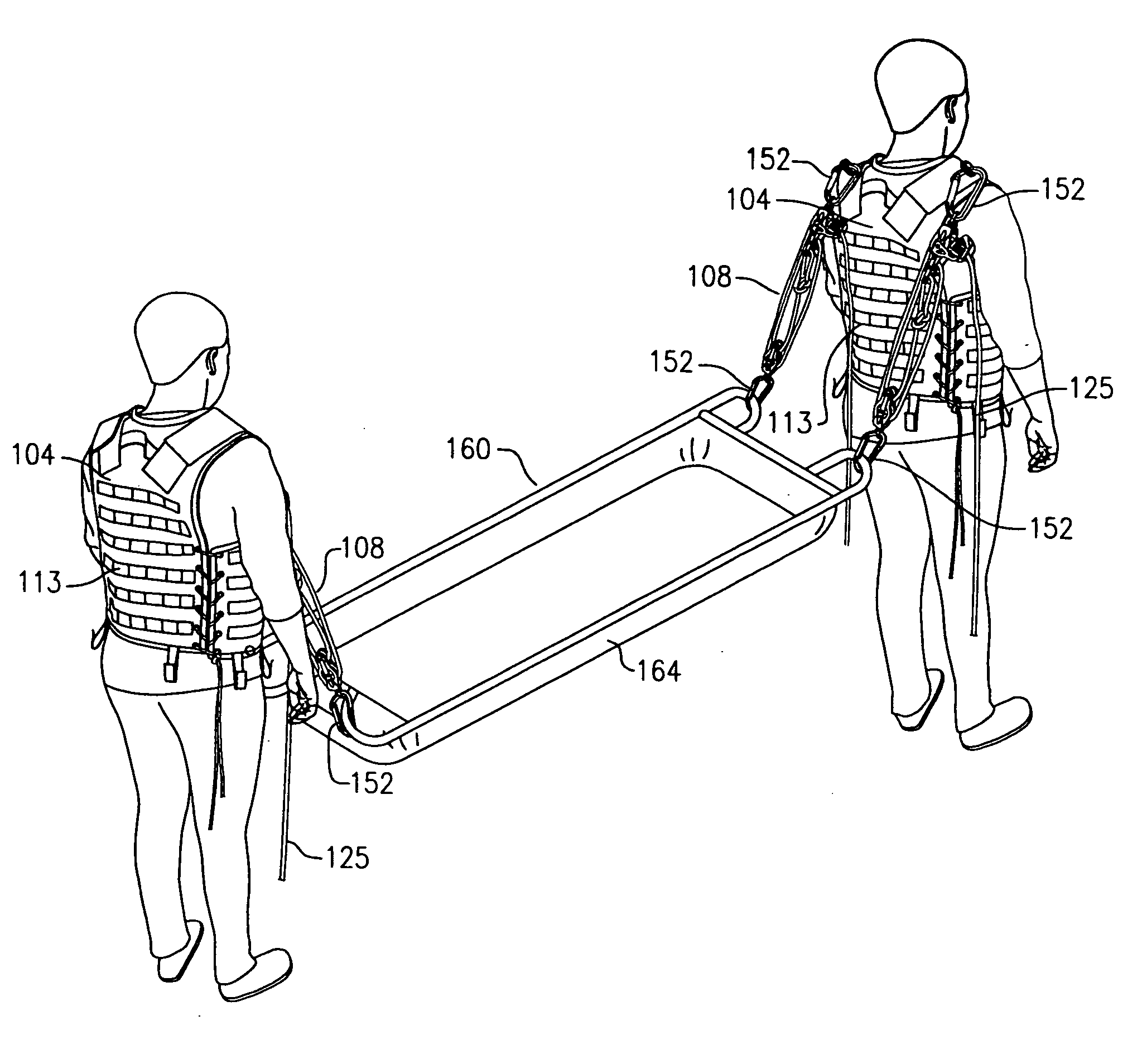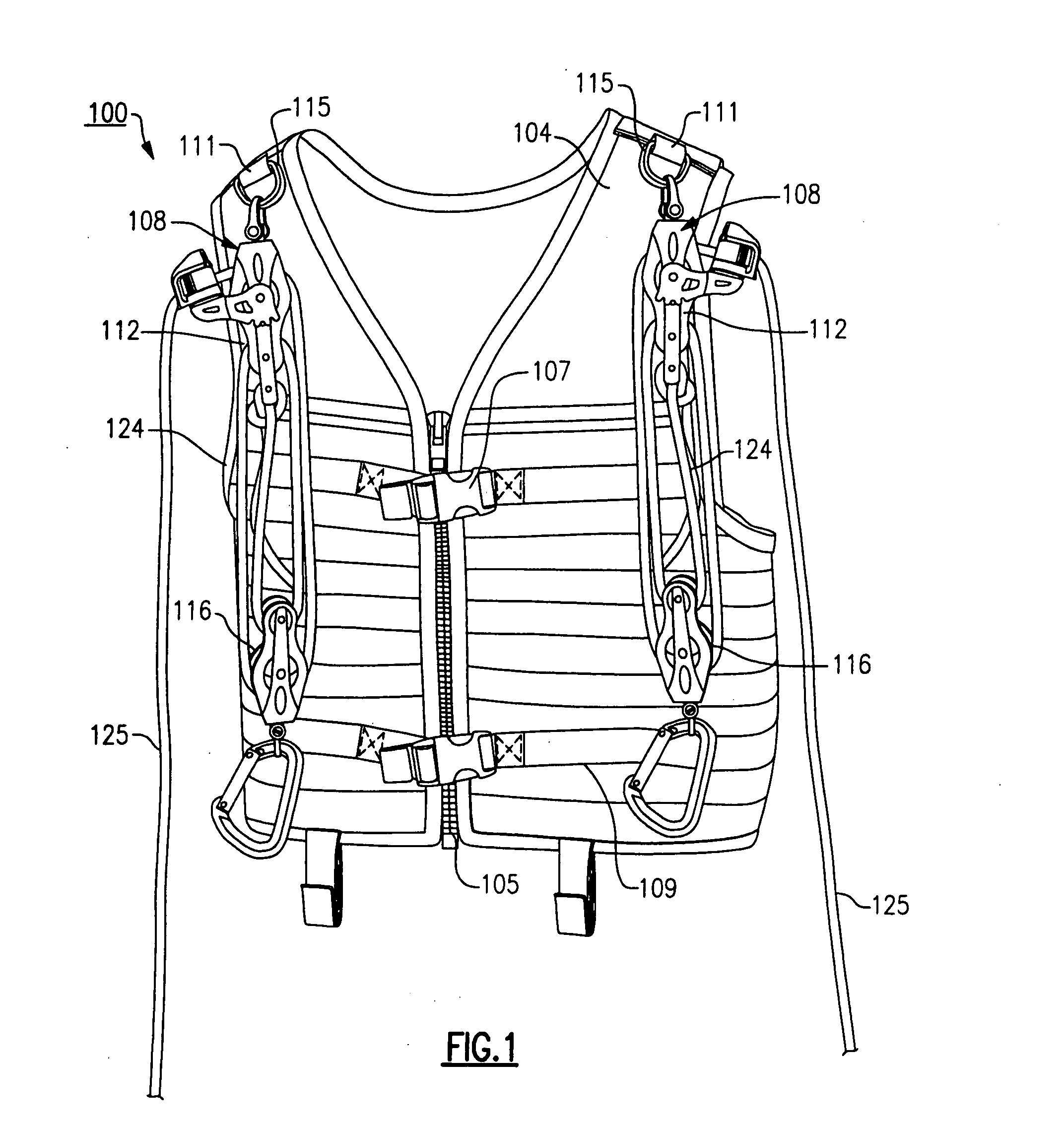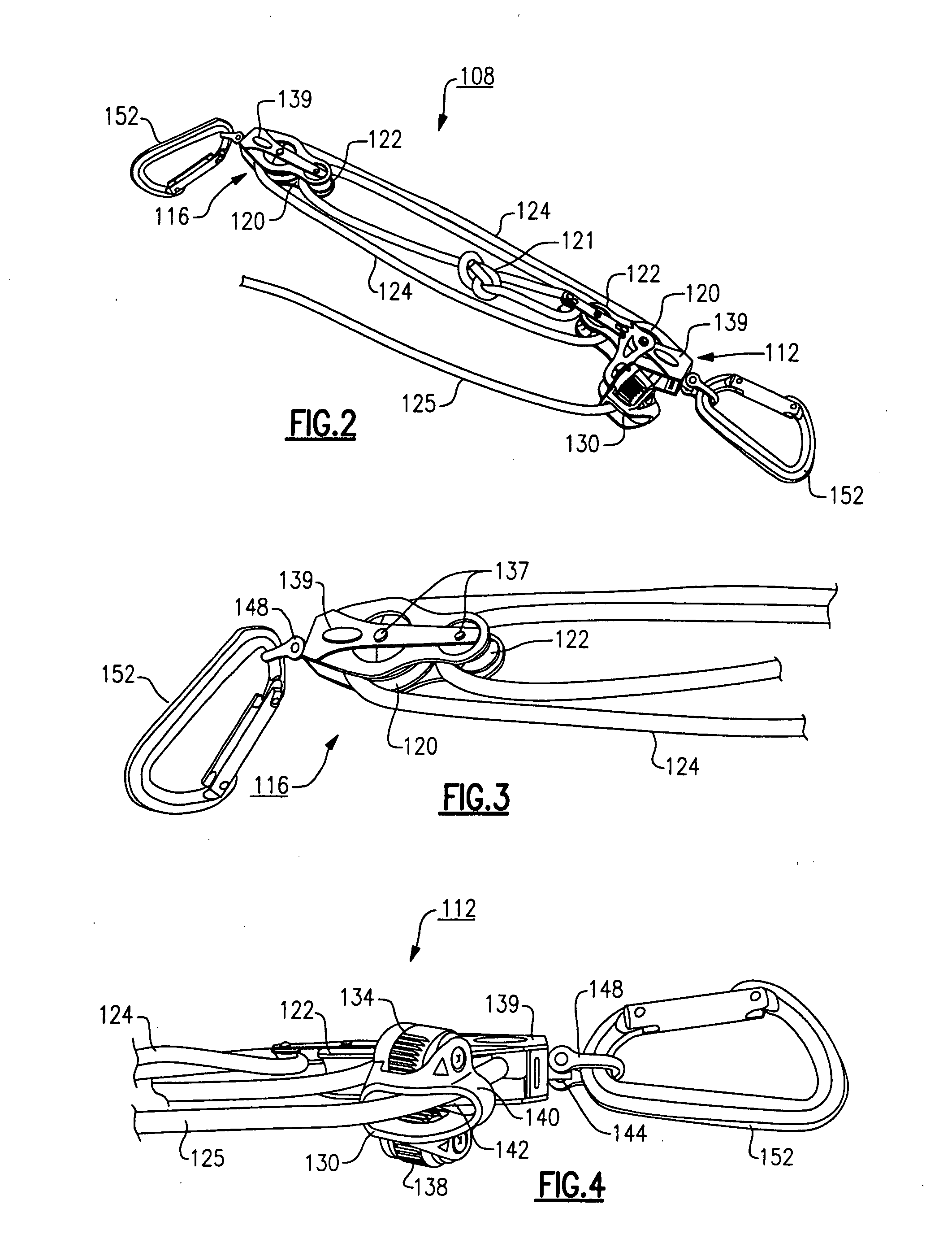Hands-free lifting and carrying apparatus
a technology of hand-free lifting and carrying apparatus, which is applied in the direction of protective garments, wheelchairs/patient conveyances, transportation and packaging, etc., can solve the problems of affecting the safety of passengers, unable to perform further dynamic adjustments, and large bulky frames and associated winch mechanisms, etc., to achieve the effect of reducing the tendency for twisting, facilitating lifting, and facilitating movemen
- Summary
- Abstract
- Description
- Claims
- Application Information
AI Technical Summary
Benefits of technology
Problems solved by technology
Method used
Image
Examples
Embodiment Construction
[0029]The following description relates to specific embodiments of a rescue lifting / carrying apparatus and method for use of the above apparatus. It will be readily apparent from the following description that numerous modifications and variations are possible. In addition, certain terms such as “top”, “bottom”, “above”, “below” and the like are used throughout the description that follows in order to provide a suitable frame of reference with regard to the accompanying drawings. These terms are not intended to be limiting, however, except where specifically indicated.
[0030]Referring to FIG. 1, there is shown a rescue lifting / carrying apparatus 100, the apparatus being defined by a vest-like garment 104 that is worn by a rescue worker, emergency aide, EMT, or other individual or wearer (not shown in this view). The vest-like garment 104 is defined by a covering shaped to cover the upper torso of the wearer that is fabricated from an extremely tough, light weight, weather resistant a...
PUM
 Login to View More
Login to View More Abstract
Description
Claims
Application Information
 Login to View More
Login to View More - R&D
- Intellectual Property
- Life Sciences
- Materials
- Tech Scout
- Unparalleled Data Quality
- Higher Quality Content
- 60% Fewer Hallucinations
Browse by: Latest US Patents, China's latest patents, Technical Efficacy Thesaurus, Application Domain, Technology Topic, Popular Technical Reports.
© 2025 PatSnap. All rights reserved.Legal|Privacy policy|Modern Slavery Act Transparency Statement|Sitemap|About US| Contact US: help@patsnap.com



